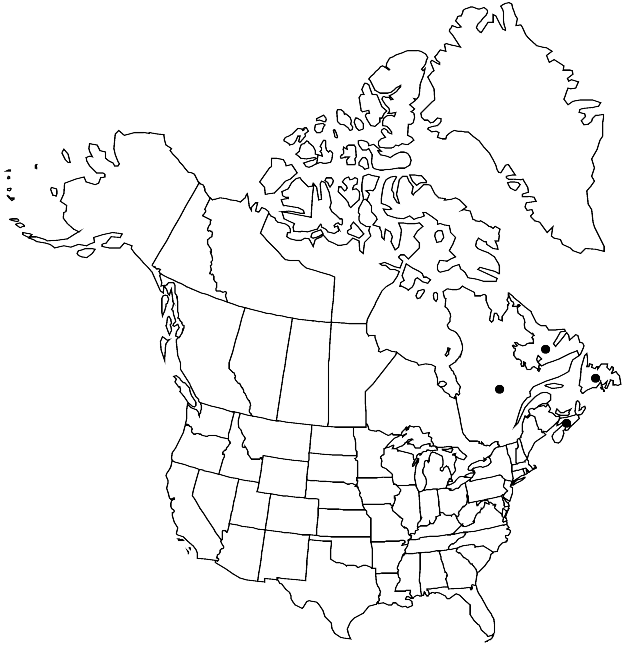Cochlearia tridactylites
Syst. Nat. 2: 367. 1821.
Biennials or perennials. Stems few to several from base, decumbent, branched distally, 0.6–3 dm. Basal leaves rosulate; petiole 0.5–5 (–9) cm; blade cordate to broadly ovate, 0.5–1.5 (–2) cm × 3–15 (–20) mm, base cordate or truncate, margins entire or dentate, rarely sinuate-dentate, apex obtuse. Cauline leaves petiolate (shortly petiolate or sessile distally); blade 4–20 × 3–17 mm, base cuneate to subtruncate (distalmost auriculate), margins coarsely dentate, apex acute. Racemes many-flowered, (more elongated proximally). Fruiting pedicels divaricate or ascending, (3–) 4–11 (–15) mm. Flowers: sepals ovate, 1–2 (–2.5) × 0.7–1.2 mm; petals oblanceolate, 1.8–3 (–4) × 1–2 mm; filaments 1–2 mm; anthers 0.3–0.5 mm. Fruits orbicular or ovoid-orbicular, 3.5–7 (–9) × 4–7 (–9) mm, distinctly angustiseptate; valves prominently reticulate; septum complete; ovules 8–12 per ovary; style 0.3–0.9 mm. Seeds brown, ovoid-oblong, 1.4–1.6 × 1.1–1.3 mm, papillate.
Phenology: Flowering Jul–Aug.
Habitat: Coastal areas, calcareous sandstone, sea cliffs, rocky seashores, limestone gravel beds, serpentine barrens, talus or gravel, escarpments
Elevation: 0-100 m
Distribution

Nfld. and Labr., N.S., Que.
Discussion
Selected References
None.
Lower Taxa
"elongated" is not a number."thick" is not a number."dm" is not declared as a valid unit of measurement for this property.